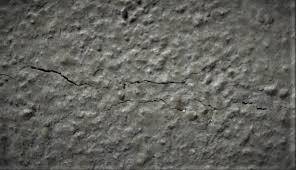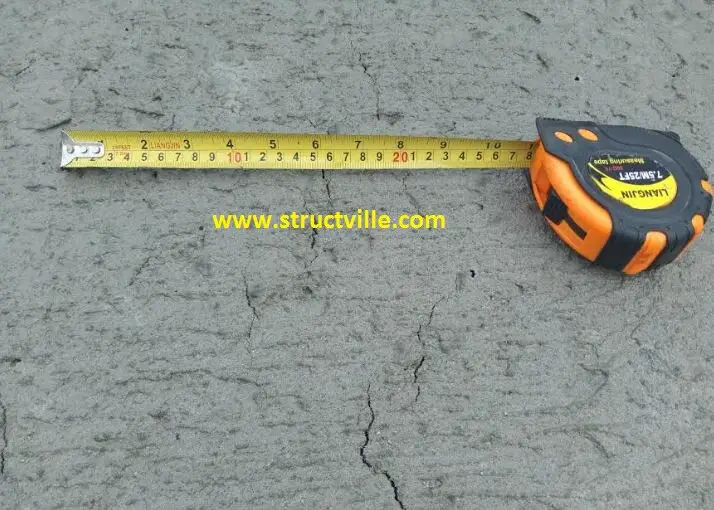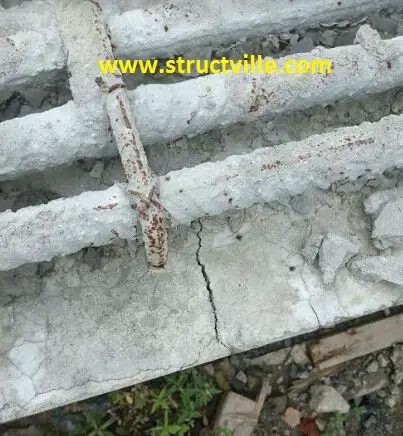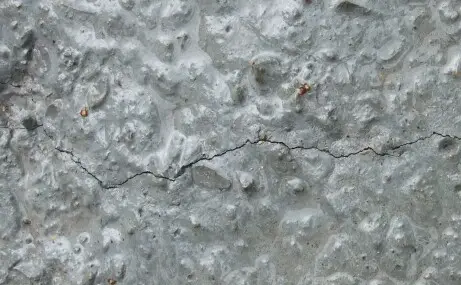Shrinkage in concrete refers to the volume reduction or contraction that occurs in concrete as it dries and ages. It is a natural and inevitable process caused by several factors, including the loss of water from the concrete matrix and the chemical reactions that take place during hydration.
The magnitude of shrinkage in concrete depends on various factors, including the water-to-cement ratio, cement type, aggregate properties, temperature, relative humidity, and curing conditions. Higher water-to-cement ratios generally lead to increased shrinkage, as there is more water available for evaporation and drying. Additionally, certain types of cement, such as high-early-strength (R) or low-alkali cement, can exhibit higher shrinkage characteristics.
For instance, grade 42.5R cement is expected to exhibit higher shrinkage characteristics than grade 42.5N cement.

Shrinkage in concrete can have several consequences and implications for construction. It can cause cracking, which not only affects the aesthetic appearance of the concrete but also compromises its structural integrity and durability. Cracks can provide pathways for the ingress of harmful substances, such as water, chlorides, and other aggressive chemicals, leading to the corrosion of reinforcing steel and the deterioration of the concrete.
There are different types of shrinkage in concrete such as drying shrinkage, plastic shrinkage, carbonation shrinkage, and autogenous shrinkage. However, shrinkage in concrete is usually the sum of autogenous shrinkage and drying shrinkage. In this article, we will be reviewing the difference between autogenous and drying shrinkage in concrete.
Autogenous shrinkage is caused by self-desiccation in young concrete as water is consumed during the hydration reaction. This occurs majorly within the early days of casting the concrete. However, drying shrinkage is the reduction in volume caused mainly by the loss of water during the drying process and this continues perhaps for years after the concrete is placed. This means that drying shrinkage commences after curing.
Autogenous Shrinkage
Autogenous shrinkage is a phenomenon that occurs in concrete without any external drying or thermal effects. It refers to the volume reduction or contraction of concrete due to the self-desiccation process, which is caused by the chemical reactions between cement and water during hydration.
When cement reacts with water, it forms a gel-like substance called C-S-H (calcium silicate hydrate), which gives concrete its strength. As the hydration process continues, this gel continues to absorb water, leading to a decrease in the water content within the concrete matrix. As a result, the volume of the gel decreases, causing autogenous shrinkage.
Autogenous shrinkage can be influenced by various factors, including the water-to-cement ratio, cement composition, temperature, relative humidity, and the presence of supplementary cementitious materials. Higher water-to-cement ratios generally lead to greater autogenous shrinkage because more water is available for hydration. Additionally, higher temperatures and lower relative humidity can accelerate the rate of shrinkage.
Autogenous shrinkage can have several consequences for concrete structures. First, it can lead to cracking if the concrete is restrained from freely contracting. These cracks can impair the durability and structural integrity of the concrete. Furthermore, shrinkage-induced cracks can provide pathways for the ingress of harmful substances such as water, chloride ions, and other aggressive agents, which can result in deterioration over time.
Mechanism of Autogenous Shrinkage
(1) During the hardening process of concrete, water from the mix accumulates into the pores, voids, and capillaries of the mixture.
(2) Water binds itself into the grains of the binder, as well as moving into the surroundings whose relative humidity is usually less than that of the concrete.
(3) In order to move water from the tiny voids, considerable forces are required to overcome the surface tension, as well as the forces of adhesion which binds the water to the voids.
(4) These forces act on the load-bearing structure of the concrete which at that time has low stiffness, can cause deformations in the concrete which can lead to cracking.

Autogenous shrinkage cracks can be largely avoided by keeping the surface of the concrete continuously wet; conventional curing by sealing the surface to prevent evaporation is not enough and water curing is essential. With wet curing, water is drawn into the capillaries and the shrinkage does not occur.
Practically, autogenous shrinkage happens in the interior of a concrete mass. According to BS EN 1992-1-1, autogenous shrinkage occurs in all concretes and has a linear relationship to the concrete strength.
According to EN 1992-1-1, autogenous shrinkage is given by Equation (1)
εca(t) = βas(t)εca(∞) ————————— (1)
Where;
εca(∞) = 2.5(fck – 10) x 10-6
βas(t) = 1 – e(√0.2t)
fck = characteristic strength of concrete (MPa)
Where t is given in days.
Drying Shrinkage
As concrete matures, moisture is gradually lost from the concrete mass to the atmosphere. This moisture loss is accompanied by volume change which is referred to as drying shrinkage.
Drying shrinkage, therefore, depends on the relative humidity (for instance, indoor concrete will shrink more readily when compared with external concrete), the quantity and class of cement (rich concrete mixes will shrink more than leaner mixes), and the member size (thinner sections will shrink more quickly than thicker sections). According to EN 1992-1-1, drying shrinkage strain develops slowly, since it is a function of the migration of the water through the hardened concrete.

Expression 3.9 in EN 1992-1-1 gives the development of drying shrinkage strain with time as given in Equation (2);
εcd(t) = βds(t, ts).kh.εcd,0 ———————- (2)
Where kh is a coefficient depending on the notional size h0 (see Table 1).
βds(t, ts) = (t – ts)/[(t – ts) + 0.04√(h03)]
Where;
t is the age of the concrete at the moment considered (in days)
ts is the age of the concrete (in days) at the beginning of drying shrinkage (normally this is at the end of curing)
h0 is the notional size (in mm) of the cross-section = 2Ac/u
Where;
Ac is the concrete cross sectional area (for slabs, Ac = thickness x 1000 mm)
U is the perimeter of that part of the cross-section exposed to drying (for slabs, take u = 2000 mm)
εcd,0 is the basic drying shrinkage strain. This is given in Annex B of EN 1992-1-1 as Equation (3);
εcd,0 = 0.85[(220 + 110.αds1).e(-αds2.0.1fcm)] x 10-6 x βRH ——— (3)
βRH = 1.55[1- (RH/RH0)3] ————- (4)
Where;
fcm is the mean compressive strength (Mpa)
αds1 is a coefficient which depends on the type of cement
= 3 for cement class S
= 4 for cement class N
= 6 for cement class R
αds2 is a coefficient which depends on the type of cement
= 0.13 for cement class S
= 0.12 for cement class N
= 0.11 for cement class R
RH is the ambient relative humidity (%)
RH0 = 100%











Hello dear friend
Myself architect Muzafar Hussain and i want more knowledge with regard to concrete technology as i have adopted teaching and professional practice both parellel. Further more i want to know how old cement can be used for construction as it lost percentage of strength after few weeks.